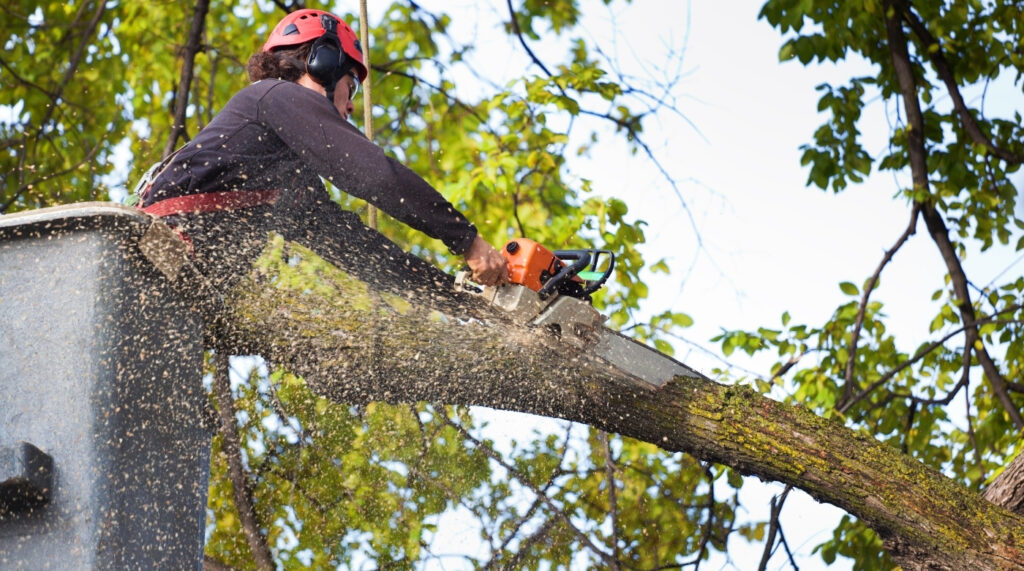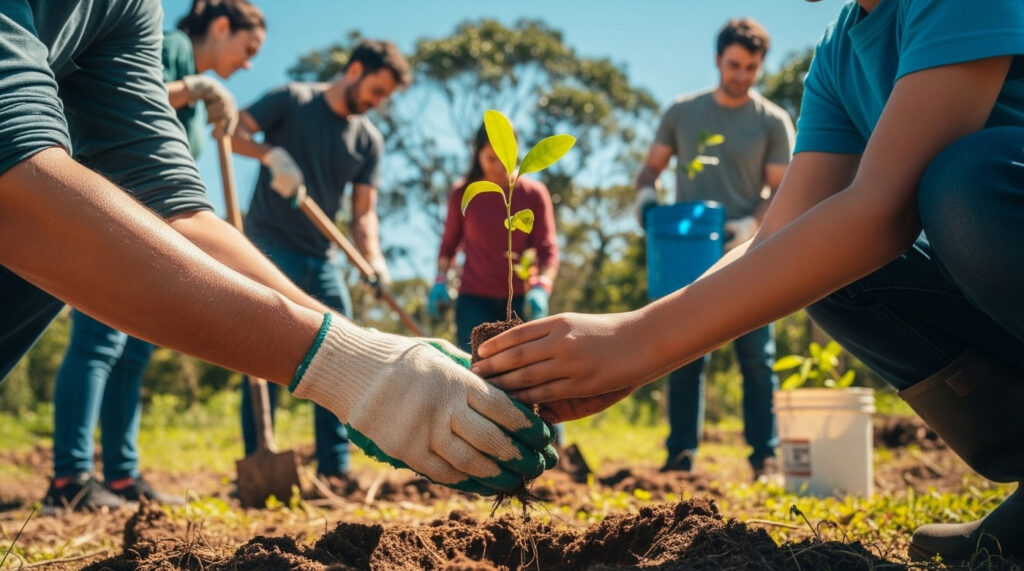The natural world has always been central to human life, but in recent years, its protection has become more urgent than ever. Fields like Arboriculture, Tree Surgery, Gardening, Horticulture, and Environmental Conservation are no longer niche — they’re at the heart of sustainability, climate resilience, and urban regeneration. As communities look to build greener spaces and restore biodiversity, these professions are gaining immense recognition.
From maintaining ancient woodlands to planting street trees in modern cities, arborists and tree surgeons play a vital role in shaping a sustainable landscape. Paired with Gardening and Horticulture, their work contributes to cleaner air, improved wellbeing, and the fight against environmental degradation. In this guide, we’ll explore the importance of these green industries, their modern relevance, career prospects, qualifications, and how they contribute to a healthier planet.

The Rise of Green Careers
Global awareness of climate change has elevated Environmental Conservation to a top priority across industries. Governments, businesses, and private landowners are investing in green infrastructure, creating unprecedented demand for skilled professionals in Arboriculture and Tree Surgery.
Recent environmental reports estimate that green industries could create over 250,000 new jobs over the next decade, many of which will focus on Horticulture, Gardening, and tree care. Urban planning now integrates tree canopy strategies, while corporate sustainability initiatives promote biodiversity as a measurable success indicator.
At the heart of this shift are specialists who understand how to protect, manage, and restore trees — professionals trained in Arboriculture and Tree Surgery. Their expertise ensures that development and environmental goals can coexist, supporting both ecological health and human wellbeing.
Understanding Arboriculture and Tree Surgery
Arboriculture is the science and art of caring for trees and woody plants. It involves studying their biology, health, and structural integrity to ensure they thrive in various environments. Arboriculturists assess soil composition, tree health, and environmental interactions to make evidence-based decisions about planting, pruning, and preservation.
Tree Surgery, meanwhile, is the practical side of that science. Tree surgeons climb, prune, fell, and maintain trees for safety, aesthetics, and long-term vitality. Their work ranges from managing ancient oaks to performing delicate maintenance on urban trees along busy roads or public parks.
These fields are deeply interconnected — arboriculture provides the theory and management strategies, while tree surgery delivers the technical application. Together, they ensure that both urban and rural ecosystems remain safe, functional, and beautiful.
The Environmental Importance of Tree Care
Trees are often called the lungs of the planet, and for good reason. Research from environmental studies shows that a single mature tree can absorb up to 48 pounds of carbon dioxide each year while releasing oxygen for two people. Urban forests reduce air pollution, lower city temperatures, and provide vital habitats for wildlife.
However, with climate change, pest outbreaks, and urban expansion threatening green spaces, the role of Arboriculture and Tree Surgery has never been more critical. Managing and maintaining trees is not merely aesthetic; it’s an act of Environmental Conservation.
Well-managed trees prevent soil erosion, filter water, and provide shade that reduces energy consumption. In cities, they cut down urban heat by up to 8°C, making neighbourhoods more liveable and improving public health. Across rural areas, Horticulture and Gardening support similar benefits, enhancing biodiversity and stabilising ecosystems that are under increasing stress.
The Intersection of Arboriculture, Horticulture, and Gardening
While Arboriculture focuses primarily on tree care, it naturally intersects with Horticulture — the broader science of cultivating plants, flowers, and landscapes. Gardening, both professional and recreational, applies horticultural knowledge in practice, transforming environments and boosting wellbeing.
Together, these fields contribute to what environmental experts now call the “Green Wellbeing Economy.” Studies have shown that regular interaction with green spaces can lower stress by 20%, reduce Anxiety and Depression, and improve overall quality of life. As cities grow denser, this connection between mental health and nature is reshaping public policy and design standards.
The practical implications are clear: tree surgeons and arborists collaborate with horticulturists and landscape designers to create sustainable spaces — from community gardens to ecological restoration projects. This collaboration is at the heart of Environmental Conservation, ensuring that every intervention contributes to long-term ecological stability.
Data Snapshot: The Green Workforce in Numbers
| Sector | Employment Growth (Projected 10 years) | Average Annual Salary | Contribution to Economy |
|---|---|---|---|
| Arboriculture & Tree Surgery | +18% | £28,000–£45,000 | £1.5 billion annually |
| Horticulture | +15% | £25,000–£40,000 | £9 billion annually |
| Gardening & Landscaping | +12% | £20,000–£35,000 | £3.5 billion annually |
| Environmental Conservation | +22% | £27,000–£50,000 | £4 billion annually |
The data above illustrates a consistent upward trend in both employment and economic contribution across all green sectors. The growing recognition of environmental work as a vital part of national development ensures continued demand for skilled professionals.
Qualifications and Career Entry
As with most technical fields, entering careers in Arboriculture, Tree Surgery, Gardening, and Horticulture requires specialised knowledge and hands-on training. Whether aspiring to climb trees as a professional surgeon or manage ecological projects, the learning path is well-defined.
- Vocational Training and Certificates: Many begin with diplomas or certificates in Arboriculture, forestry, or land-based studies. Entry-level qualifications often include tree climbing, chainsaw operation, and environmental awareness.
- Apprenticeships and Practical Training: Apprenticeships provide on-the-job experience under the supervision of experienced arborists or horticulturists. These are ideal for those seeking practical skills alongside classroom learning.
- Higher Education: Advanced roles may require degrees in Horticulture, environmental management, or plant science. Such qualifications open pathways into consultancy, research, and conservation management.
- Specialist Certifications: Courses in ecological surveying, pest control, and urban tree risk assessment enhance professional credibility and allow individuals to take on complex environmental projects.
Professional development remains ongoing. Many arborists and horticulturists continue training throughout their careers to stay updated on evolving techniques, environmental policies, and safety standards.
Arboriculture and Environmental Conservation in Practice
Tree care is often seen as physical labour, but in reality, it is an essential environmental service. Arborists contribute directly to Environmental Conservation by maintaining ecological balance. For example, when urban development requires tree removal, arborists perform surveys to identify which trees can be preserved, relocated, or replaced. Their work ensures minimal disruption to local wildlife and soil integrity.
Tree surgeons, too, play a crucial conservation role. Deadwood removal prevents disease spread, and selective pruning encourages healthy growth and longer lifespans. Such measures support biodiversity by maintaining habitats for birds, insects, and fungi.
Data from environmental agencies suggests that urban tree cover in the UK contributes an estimated £6.1 billion in annual ecosystem services, including carbon sequestration, air filtration, and stormwater management. Without skilled arborists and tree surgeons, those benefits would diminish rapidly.

The Connection Between Horticulture and Sustainability
Horticulture extends beyond gardens and ornamental landscapes — it underpins sustainable agriculture, food security, and climate resilience. By studying plant genetics, soil health, and pest management, horticulturists play a vital role in developing sustainable farming systems that reduce chemical dependency and improve crop diversity.
In cities, horticultural professionals design green roofs and vertical gardens that absorb pollution, regulate temperature, and provide wildlife corridors. Such innovations bridge the gap between Gardening and Environmental Conservation, transforming urban environments into living ecosystems.
Gardening, often underestimated as a profession, also contributes significantly to sustainability goals. Professional gardeners maintain community green spaces, heritage gardens, and nature reserves, all of which enhance environmental quality and social wellbeing.
The Economic and Social Impact of Green Industries
The financial impact of Arboriculture, Tree Surgery, and Horticulture is vast and growing. The UK’s green industries contribute billions annually to GDP, employing over 350,000 people in horticulture alone. This number is projected to increase as new environmental policies promote reforestation, sustainable agriculture, and biodiversity recovery.
Socially, these professions improve community wellbeing. Studies have shown that access to green spaces can lower hospital admissions and improve mental health outcomes. Schools with gardens and tree cover report better student concentration and reduced behavioural issues. These effects underscore the value of integrating Gardening and Environmental Conservation into public planning.
Furthermore, these careers support rural economies. Small businesses in tree care, landscape design, and environmental restoration contribute to local development and encourage sustainable land use.
Climate Change and the Need for Skilled Tree Professionals
Climate change has increased the frequency of extreme weather events, placing unprecedented stress on trees and landscapes. Droughts, flooding, and pests are challenging traditional management methods. Arboriculture now plays a critical role in resilience planning, ensuring that trees can withstand these pressures.
Tree surgeons use advanced techniques such as bracing, root zone improvement, and risk analysis to maintain stability in challenging conditions. Their expertise prevents property damage, improves public safety, and protects heritage trees that might otherwise be lost.
In parallel, horticulturists are experimenting with climate-adaptive planting — selecting species that can tolerate shifting conditions. These innovations highlight the synergy between Horticulture, Gardening, and Environmental Conservation, ensuring that nature can adapt alongside human development.
A Day in the Life of a Green Professional
A day in the life of a tree surgeon or horticulturist blends technical skill with environmental stewardship. One morning might begin with a site inspection, assessing tree health using aerial surveys or drones. The next could involve climbing a mature oak to remove diseased branches safely. Horticulturists may spend their days designing sustainable planting schemes, testing soil health, or advising local councils on ecological projects.
Each role is dynamic, combining physical work, science, and creativity. It’s a career path where every decision — from pruning techniques to plant selection — influences environmental outcomes for decades.
Job Satisfaction and Lifestyle Benefits
Few professions offer the satisfaction that comes from visible results and meaningful environmental impact. Surveys reveal that over 80% of professionals in Arboriculture and Horticulture report high job satisfaction due to working outdoors, contributing to conservation, and seeing direct outcomes from their efforts.
Additionally, these careers often provide flexibility. Freelance opportunities in Tree Surgery and Gardening allow individuals to manage their schedules and specialise in areas of personal interest, such as wildlife-friendly design or historic tree preservation.
The work is physically active, mentally stimulating, and emotionally rewarding — ideal for those who prefer tangible progress over office routines.
The Future of Arboriculture and Environmental Careers
The future of Arboriculture, Tree Surgery, and Horticulture is intertwined with global sustainability goals. As nations commit to net-zero emissions and biodiversity restoration, these fields will remain at the forefront of environmental progress.
Urban greening initiatives, reforestation projects, and eco-design policies will continue creating opportunities for skilled professionals. Moreover, the integration of technology — such as GIS mapping, drone monitoring, and data-driven soil analytics — is modernising the sector, attracting younger generations eager to combine environmental science with digital innovation.
Collaborations between arborists, horticulturists, and conservationists will shape landscapes that are both functional and regenerative. This new era of green work is not just about preserving the environment but actively rebuilding it.
Final Thoughts
Arboriculture and Tree Surgery represent more than just the care of trees; they symbolise the future of sustainable living. Together with Gardening, Horticulture, and Environmental Conservation, they form the backbone of global efforts to restore balance between human activity and nature.
The science of trees and plants is no longer confined to the countryside — it’s transforming cities, improving health, and combating climate change. For those seeking a meaningful, stable, and forward-thinking career, the green industries offer not only opportunity but purpose.
In a world increasingly defined by its environmental choices, professionals who dedicate their lives to trees, plants, and ecosystems stand at the very heart of progress. The future will belong to those who understand that caring for nature is not a trend — it’s a legacy.

